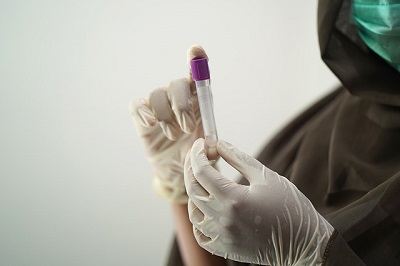Can Semen Color Indicate Male Health?
The color of semen can serve as an indicator of male health, but it is not the sole determinant. Normally, semen is milky white due to its composition, which includes sperm, seminal fluid, prostatic secretions, and enzymes. However, when the body encounters certain issues, changes in semen color may serve as warning signals.

What Is the Normal Color of Semen?
Healthy semen is typically milky white or grayish-white, with a uniform texture free of noticeable clumps or impurities. This coloration reflects a balanced composition and normal functioning of the male reproductive system. However, any change in semen color could indicate underlying health issues.
For example, yellow or greenish semen may signal inflammation in the reproductive tract, such as prostatitis or seminal vesiculitis. This discoloration is often accompanied by symptoms like frequent or urgent urination, necessitating prompt medical attention to prevent worsening conditions.
Another common variation is reddish or brownish semen, which suggests the presence of blood. This condition, known as hematospermia, may stem from prostate or seminal vesicle disorders, such as prostatitis, seminal vesicle inflammation, or even varicocele and seminal vesicle tumors. Immediate medical evaluation is recommended for such cases to diagnose and treat the underlying cause effectively.
Factors Affecting Semen Color: Key to Male Health
Changes in semen color are more than a superficial phenomenon; they are influenced by numerous factors. Understanding these factors is critical for assessing male health.
1. Dietary Habits
Unhealthy diets rich in fats and sugars can increase inflammatory responses in the body, affecting semen color. Deficiencies in essential nutrients, such as vitamin C and zinc, may also lead to abnormalities. For instance, a lack of these nutrients can cause semen to become lighter or exhibit unusual hues.
2. Lifestyle Choices
Chronic stress and anxiety disrupt hormonal balance and may alter semen coloration. Additionally, excessive alcohol consumption and smoking negatively impact semen quality, often causing darker discoloration and uneven texture.
3. Environmental Factors
Prolonged exposure to high temperatures, such as frequent hot baths or electric blankets, may darken semen color. Similarly, contact with certain chemicals or heavy metals can contribute to abnormal coloration.
4. Health Conditions and Medications
Prostatitis and seminal vesiculitis are common conditions leading to yellow or bloody semen. Medications like antibiotics and anti-inflammatory drugs may also affect semen color.
Treatment Options: Highlighting Diuretic and Anti-inflammatory Pill
When discoloration arises from inflammation-related issues such as prostatitis, seminal vesiculitis, or other male urogenital disorders, natural remedies like the Diuretic and Anti-inflammatory Pill can be highly effective. This herbal treatment helps reduce heat, detoxify the body, improve blood circulation, and alleviate symptoms. Regular use may also support recovery and help restore normal semen color.
How to Improve Male Health Through Semen Color Observation
Given the connection between semen color and overall health, men can take proactive steps to monitor and improve their well-being:
1. Self-Observation
Regularly checking semen color is crucial. Any persistent abnormality should be documented and reported to a healthcare professional promptly.
2. Dietary Adjustments
Reducing high-fat and high-sugar foods while increasing intake of vitamin-rich and zinc-rich foods, such as fresh fruits, vegetables, and nuts, can significantly improve semen health. Vitamin C and zinc are especially beneficial for boosting immunity and reducing inflammation.
3. Lifestyle Improvements
Managing stress through exercise and maintaining a positive mindset can help restore hormonal balance. Avoiding smoking and excessive alcohol consumption is also critical for improving semen quality and overall reproductive health.
4. Avoiding Harmful Environmental Factors
Minimize exposure to high temperatures and avoid contact with toxic chemicals or heavy metals whenever possible.
When to Seek Medical Attention?
The frequency and duration of semen color changes are key indicators of potential health issues. Occasional discoloration may result from temporary factors such as diet or minor lifestyle changes and is typically not a cause for concern. However, frequent or prolonged abnormalities require medical attention.
For example, yellow semen or blood in semen persisting for weeks, especially when accompanied by urinary symptoms, may indicate inflammation or other disorders in the reproductive system. A healthcare provider can provide a thorough evaluation and appropriate treatment to address these concerns effectively.
Conclusion
Semen color serves as an important, though not definitive, indicator of male health. Regular observation, coupled with a balanced diet, healthy lifestyle choices, and timely medical intervention, can help men maintain their reproductive health. Moreover, incorporating treatments like the Diuretic and Anti-inflammatory Pill for inflammatory conditions can enhance recovery and restore normal semen coloration, offering a natural and effective solution for overall well-being.
You may also be interested in:
Watch Out for Pink Semen: A Potential Sign of Seminal Vesiculitis
Can Seminal Vesiculitis Cause Excessive Semen Volume?
What Can Patients Do about Watery Semen Due to Epididymitis?



